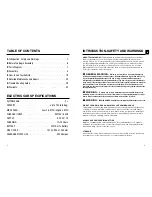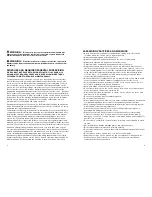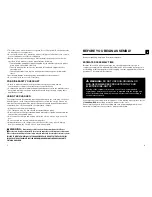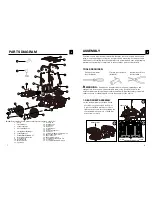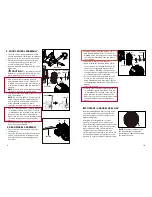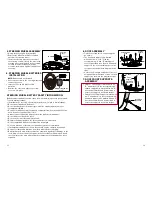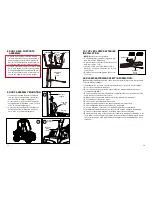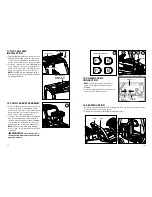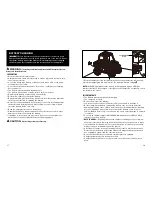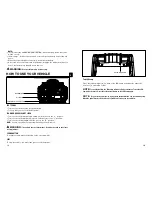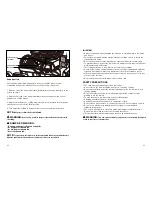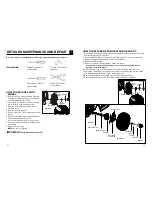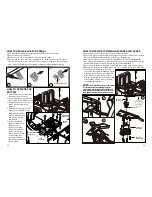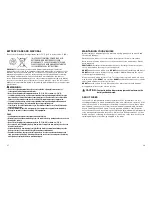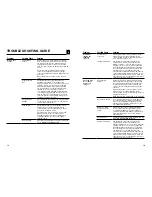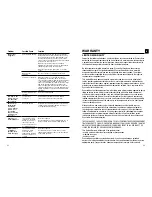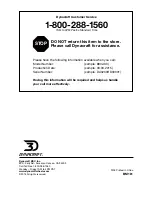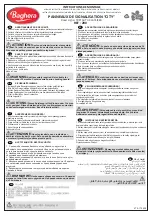
17
18
1. Plug the charger port into the input socket (the socket is under the vehicle seat).
2. Plug the charger plug into a wall outlet. The battery will begin charging.
NOTE:
Red LED light indicates the battery is charging and a green LED light
indicates battery is fully charged. If the lights on the charger do not light up, check
the power to the outlets.
Charging Input
Socket
1
2
PREVENT FIRE
• Never modify the electrical system.
• Alterations could cause a fire resulting in serious injury and could also ruin
the electrical system.
• Use of the wrong type battery or charger could cause a fire or explosion
resulting in serious injury.
• Use of non-original components on this vehicle could cause overheating,
fire or explosion.
• The battery must be handled by adults only.
• The battery is heavy and contains sulfuric acid (electrolyte).
• Dropping the battery could result in serious injury.
• Never allow children to charge the battery.
• Battery charging must be done by adults only. A child could be injured by
the electricity involved in charging the battery.
• Never lift or carry the battery by the wires or connector, this can damage
the battery and possibly cause a fire resulting in serious injury. Lift and
carry the battery by the case only.
• Read the safety instructions on the battery.
• Examine the battery, charger and their connectors for excessive wear or
damage each time you charge the battery.
• If damage or excessive wear is detected, do not use the charger or the
battery until you have replaced the worn or damaged part.
CAUTION:
Use the charger in dry locations only.
IMPORTANT NOTE
• The battery must be upright while charging.
• The charger is not a toy.
• Do not short-circuit the battery.
• You do not need to remove the battery from your vehicle to recharge it.
• Before charging the battery, examine the battery case for cracks and other
damage which may cause sulfuric acid (electrolyte) to leak during the charging
process. If damage is detected, do not charge the battery or use it in your
vehicle. Battery acid is very corrosive and can cause severe damage to surfaces
it contacts.
• Use only an original charger (AC 120V 60Hz) with an output of DC 24V (1A) to
charge your vehicle battery.
•
NOTE TO ADULTS:
Regularly examine the charger for damage to the cord, plug,
housing or other parts that may result in the risk of fire, electric shock or injury.
• If your battery is old and will not accept a charge, do not leave it in the vehicle.
Always remove a dead battery from the vehicle.
• After the first charge, recharge the battery for at least 12 hours after each use.
Never charge the battery longer than 30 hours. Charge the battery after each
use, regardless of how long the vehicle was used.
• Do not allow the battery to run down completely before charging.
• Charge the battery before storing the vehicle.
• Charge the battery at least once per month, even if the vehicle has not been
used.
BATTERY CHARGING
IMPORTANT!
Before first time use, charge the battery for at least 18 hours.
Charge the battery for at least 12 hours after each use of the vehicle. Never
charge the battery longer than 30 hours. Overcharging or undercharging
the battery may shorten battery life and decrease vehicle running time.
WARNING:
The battery can fall out and injure a child if the vehicle tips over.
Always use the battery cover.


